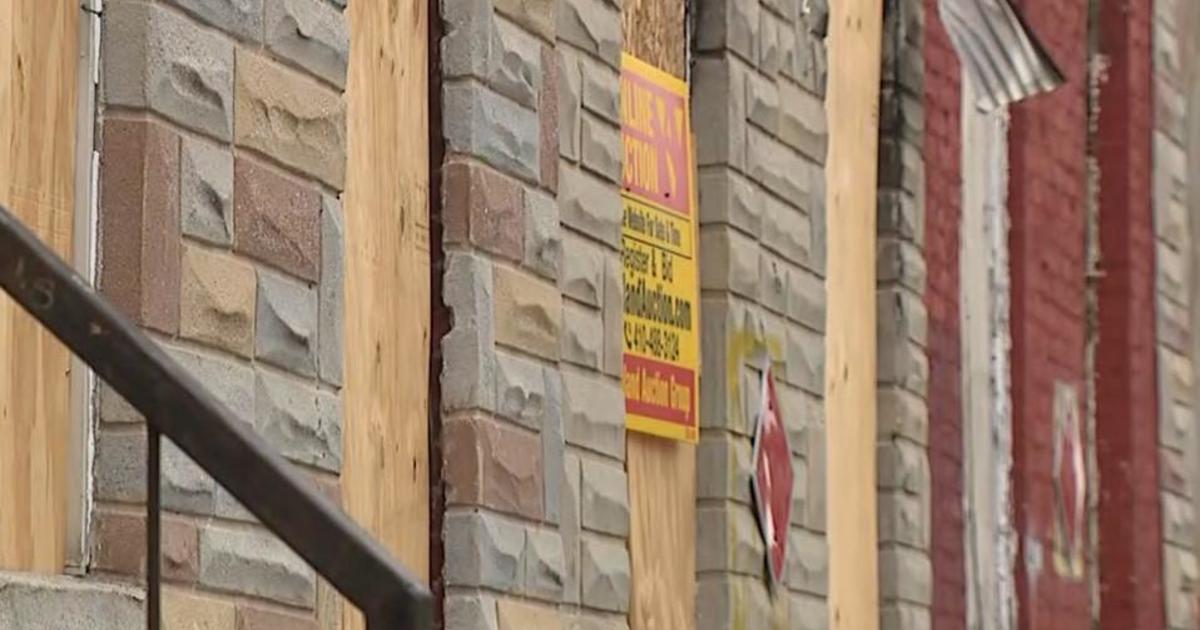What to know about the nuisance spotted lanternfly and its expanded quarantine zone in Maryland
BALTIMORE - One of Maryland's most annoying pests is the spotted lanternfly.
We know summer is around the corner, and they tend to show up everywhere.
The problem is the population keeps growing.
Spotted lanternfly quarantine by Adam Thompson on Scribd
The Maryland Department of Agriculture (MDA) has expanded its spotted lanternfly quarantine zone to include two new counties.
Spotted Lanternfly quarantine by year by Adam Thompson on Scribd
"Particularly in Garrett County and Charles County, we're seeing a couple of positives, so some small populations," said Jessica Boyles, a spotted lanternfly coordinator for the Maryland Department of Agriculture. "We are moving them around far faster than they can themselves organically, and that's where the problem arises."
Jessica Boyles is a spotted lanternfly coordinator for the Maryland Department of Agriculture and she knows all about the bug.
"Honeydew, which is sugar, basically sugar water is their excrement. But it attracts stinging insects," Boyles explained.
The MDA said the reason for the expansion is because the spotted lanternfly poses a big threat to some of the region's agricultural industries– and it's up to us to help slow the spread.
spotted lanternfly quarantine order by Adam Thompson on Scribd
"We expanded the quarantine just to let residents and businesses know that those populations are there, that we need to be conscious of that so that we don't spread it into other counties that are unaffected or other states that are unaffected," said Boyles.
Originally from Asia, the little planthopper was first discovered in the U.S. in 2014. A few years later, they have now been spotted in 19 of Maryland's 23 counties. According to the MDA, Maryland residents could begin seeing them as early as July.
"The spotted lantern fly spreads so well by hitchhiking, which requires, you know, getting on cars or getting on people getting inside cars and being taken to other places," said Michael 'Mike' Mccracken, an Agriculture Inspector with the Maryland Department of Agriculture.
The spotted lanternfly is harmless to people and pets. But it feeds on more than 70 different types of crops and plants, including grapes, apples, oak trees, and many others.
"Vineyards, of course, are number one, I mean that's a large economy for us in terms of grapes and wine and wine production," Boyles told WJZ. "So that's really important. We want to make sure that our local grape growers are able to continue to grow grapes and thrive."
Experts say we could see them as early as July, and the best thing to do to get rid of them is to kill them.
"We always recommend mechanical removal, kind of just squashing them and stomping them," McCracken told WJZ.
"Be conscious of little kids and pets, especially if it's excreting a lot of honeydew," said Boyles.
"Check cars, check yourself, make sure you're not moving this bug somewhere that it is or it is already or isn't," said McCracken.
This quarantine restricts the movement of regulated articles that might contain the spotted lanternfly in any of its life stages, including egg masses, nymphs, and adults.
Businesses, municipalities, and government agencies requiring any regulated item's movement within or from the quarantine zone must have a specialized permit.
The permit may be obtained by taking a free online training course and exam through PennState Extension, according to the MDA.
Examples of regulated articles include landscaping, remodeling, or construction waste; packing materials like wood boxes or crates; plants and plant parts; vehicles; and other outdoor items.
All spotted lanternfly permits for Maryland, Virginia, Pennsylvania, New Jersey, and Delaware are transferable and valid throughout the region.
Those living within the quarantine zones are encouraged by the State's Department of Agriculture to be vigilant in containing the spread of spotted lanternflies.
Sightings may be reported through MDA's online survey. Other informational materials are available on the program's website.



